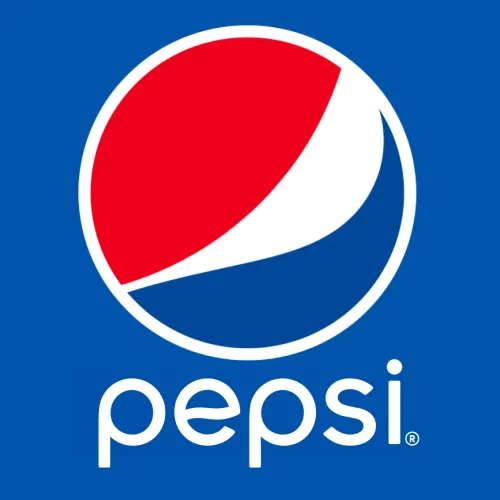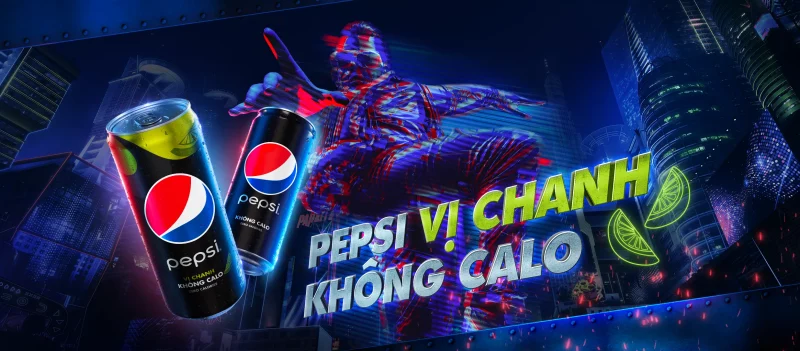With effective business strategies, Pepsi has gradually become one of the famous beverage brands in the world. Let’s learn and analyze Pepsi’s business strategy in the article below.
l. Overview of PepsiCo corporation
According to Wikipedia , PepsiCo is a world-leading food and beverage corporation with products enjoyed by consumers more than one billion times every day in more than 200 countries and territories around the world.
PepsiCo Group achieved net sales of approximately $63 billion in 2016 with key brands including Frito-Lay, Gatorade, Pepsi-Cola, Quaker and Tropicana. PepsiCo’s product portfolio includes a wide range of beverage and favorite products with a total of 22 brands, generating approximately $1 billion each in annual retail sales.
PepsiCo is interested in manufacturing, marketing and distributing nut-based snack foods, beverages and other products. PepsiCo was founded in 1965 with the merger of Pepsi-Cola Company and Frito-Lay, Inc. PepsiCo has expanded from its namesake Pepsi product to a broader range of food and beverage brands, the largest of which include the acquisition of Tropicana in 1998 and Quaker Oats Company in 2001. Acquiring these companies helps Pepsi add the Gatorade brand to its product portfolio.
As of January 26, 2012, PepsiCo’s 22 brands generated retail sales of more than $1 billion, and the company’s products were distributed in more than 200 countries, resulting in net sales of annually is 43.3 billion US dollars. Based on net revenue, PepsiCo is the second largest food and beverage enterprise in the world, after Nestlé. Within North America, PepsiCo is the largest food and beverage company by net revenue.

Pepsi is a famous product produced by PepsiCo corporation. Caleb Bradham, a druggist in New Bern, North Carolina invented Pepsi in the early years of the 20th century.
From very ordinary beginnings, Pepsi survived two bankruptcies and became the second largest beverage company in the world. Today, Pepsi’s global logo is one of the most recognized logos worldwide. Pepsi-Cola beverages can be found in more than 195 countries around the world.

- What is a business strategy & How to build it effectively
- Pepsi’s marketing strategy
- What is SWOT model & 7 steps of SWOT analysis
ll. Analyze the SWOT model of Pepsi
The SWOT model is a famous tool known and applied by many businesses because of its usefulness in helping managers analyze important factors inside and outside the business from which to establish strategies. appropriate strategy and business plan.
SWOT stands for 4 words: Strengths, Weaknesses, Opportunities and Threats – is a famous model that helps businesses analyze and build your business strategy effectively.
Among the 4 elements of the SWOT model, strengths and weaknesses are two factors for internal assessment of the business. For these two factors, businesses can control and change. Often these factors are related to company operations, assets belonging to the business, product development, etc.
Besides, the remaining two factors, opportunities and challenges, are external factors that are often related to the market and are macroeconomic in nature. Businesses may not be able to control these two external factors. Businesses can fully seize opportunities, but they must also pay attention and be wary of external challenges that can occur at any time.
Read more details about the SWOT model in the article : What is the SWOT model & 7 steps of SWOT analysis
For Pepsi, the strengths, weaknesses, opportunities and threats of this brand can be analyzed as follows.
1. Strengths
Regarding the strengths in Pepsi’s SWOT model, this brand has some outstanding strengths below.
Famous brand
Pepsi is a brand that has existed for nearly 50 years. Therefore, they have quite a lot of experience as well as positioning their image in the minds of consumers. It can be said that nowadays no one knows the Pepsi brand. When mentioning Pepsi, people immediately think of the image of a simple, vibrant, refreshing Pepsi. Pepsi has a large number of loyal customers worldwide.
Diverse product portfolio
Pepsi’s product portfolio is more diverse and richer than Coca-Cola.
Pepsi’s position as a “complete beverage company” is the biggest reason for its global success. In the US, Pepsi has many product brands such as Pepsi, Diet Pepsi, Pepsi ONE, Mountain Dew, Wild Cherry Pepsi, Aquafina…
The company also produces and sells ready-to-drink teas and coffees through joint ventures with Lipton and Starbucks. Pepsi’s main products sold globally also include Pepsi Max, Mirinda and 7-Up.
2. Weaknesses
Besides its strengths, Pepsi also has weaknesses that need to be overcome.
Some of the main weaknesses in Pepsi’s SWOT model can be mentioned as follows:
Disadvantage of being a latecomer
In the war with Coca-Cola, Pepsi is at a disadvantage because it is a latecomer. For example, when entering Russia, Venezuela, and South America. As a latecomer, to regain market share, Pepsi had to make a lot of effort and invest a lot to create differentiation.
The product does not meet nutritional standards
Pepsi’s products are too high in sugar, fat, salt… low in fruits, vegetables and low-fat milk, which causes health concerns for consumers.
Pepsi CEO Indra Nooyi said: Customers are paying more attention
health. Governments around the world are applying pressure to improve the nutritional content of products.
3. Opportunities
To take advantage of strengths and overcome weaknesses, Pepsi can seize a number of beneficial opportunities to develop the brand and increase sales as follows:
Expanding the food market segment
Currently, the fast food and healthy food and good service industries are growing, this is an opportunity for Pepsi to expand into the food segment.
In the US and some other markets, as scientists increasingly release reports commenting on the effects of drinking carbonated beverages on health, the market for non-carbonated beverages is on the rise again. This is an opportunity for Pepsi to invest in developing more non-carbonated beverages.
The tastes and trends of modern consumers are increasingly diverse
The tastes and trends of modern consumers are increasingly diverse. This is an opportunity to help Pepsi take advantage of its flexibility and creativity in producing products that respond quickly to customers’ tastes and needs. In addition, it also helps Pepsi focus on the following aspects: products have advantages based on consumer needs
4. Threats
Besides opportunities, Pepsi also needs to face some challenges. The key challenges in Pepsi’s SWOT analysis can be listed as follows:
Market risks
Pepsi is facing three main types of risks that can bring disadvantages to the company:
- Raw material prices tend to increase, affecting raw material and energy costs
- Effect of exchange rate
- Effect of interest rates
Barriers adapted to the standards of the domestic market
Pepsi has a strategy to penetrate many markets, so the difficulty for Pepsi is to adapt to meet the standards of domestic markets. However, Pepsi is facing a huge challenge. Pepsi has a fairly large scale, so it requires the company to have appropriate marketing policies and solutions to respond to each cultural, social, economic, political and other conditions and regulations. decisions of the Governments of the countries.
Pepsi SWOT analysis table
| Strength | Weakness | Opportunity | Challenge |
|
|
|
|
lll. Analyze Pepsi’s business strategy
To become one of the famous beverage brands in the world, Pepsi has extremely effective business strategies. So what is Pepsi’s business strategy?
1. Pepsi’s business philosophy
About the philosophy of Pepsi’s business strategy, with the business philosophy “Share profits with the community” and the company’s value standard “Caring for customers, consumers and the environment we live in” , this brand constantly improves products and provides better environmental protection solutions – something that creates a brand impression and receives attention from consumers.
This is also considered the main reason for creating the “Pepsi – Think & Drink” campaign to call on consumers to use glass bottles to contribute to environmental protection.
2. Pepsi’s business strategic goals
As for the goals of Pepsi’s business strategy, the company’s goal is to continue to consolidate and maintain its leading position in the beverage industry while living by its values. Going forward, Pepsi will continue to pursue the goal of sustainable development, bringing benefits to company employees and business partners, as well as contributing to the communities where the company does business.
3. Scope of Pepsi’s business strategy
To be competitive, the scope of Pepsi’s business strategy is the market segments that this brand targets. In particular, Pepsi focuses on the customers and regions and geographies where the products will be provided. From determining the strategic scope, the company will carry out appropriate packaging design as well as research and develop products that suit customers’ tastes and needs.
With a diverse number of products, Pepsi’s market segments are determined based on the following 3 ways.
- Market segmentation by age : Pepsi’s main customer group is from 15 to 45 years old. This is most clearly shown through Pepsi’s advertising method, the brand promotes running ads on social networking sites, in order to reach more of its target customer group, which is teenagers.
- Market segmentation by geographical location : When Pepsi entered the Vietnamese market, it tried to distribute products with a dense network from urban to rural areas, from plains to mountainous areas, from South to North. However, this brand still focuses on big cities where the population is concentrated.
- Market segmentation by income level : The income level of Pepsi’s target customer group includes three groups: Average, above average and high income earners.
Read more about market segments of other famous brands in the article : What is market segmentation? 4 common types of market segmentation
4. Pepsi’s business strategy activities
Regarding Pepsi’s strategic business activities, this brand has focused on developing and improving the following activities.
Technology
One of the activities that Pepsi focuses on is investing in technology.
PepsiCo has announced the launch of the first two digital hubs located in two cities: Dallas (USA) and Barcelona (Spain). The two centers will create a premise for deploying leading technologies such as machine learning and artificial intelligence in the production of attractive products that suit customer tastes.
With this project, PepsiCo expects to gradually digitally transform the group’s business operations and distribution system, creating more than 500 new jobs related to digital and data mining in the industry. within the next 3 years.
Marketing manager
Regarding Marketing management in Pepsi’s business strategy, this brand has deployed its Marketing strategies according to the 4P Marketing Mix model .
Product
Pepsi products thrive in a developing social context. People are often busy with their work and don’t have much time, so they love fast food and accompanying carbonated drinks like Pepsi.
In addition, Pepsico has also produced Pepsi specifically for dieters to expand the market. Through reducing the amount of sugar, Pepsi has launched the product Diet Pepsi.
Currently, Pepsi has researched and launched the world’s first plastic bottle made entirely from renewable energy and surplus products from food processing. Green PET bottles are produced from biological materials such as corn husks, grass… through many conversion steps. Pepsi also uses waste products from its food production process such as potato peels, orange peels and oat shells to produce Green PET bottles. This type of bottle has the same usability and appearance as bottles made from petroleum.
Price
Pepsi has priced its products through several key strategies:
- Market penetration pricing: Different from low pricing strategies to filter the market, Pepsi has chosen a relatively low new product pricing strategy with the purpose of market penetration to attract a large number of customers, At the same time, achieving a large market share.
- Discount Pricing: Pepsi will adjust prices to provide discounts to customers who pay ahead of time or buy in bulk.
- Differentiated pricing by product type: Pepsi’s product types are priced differently and proportional to the corresponding costs to produce each type of product.
Distribution system (Place)
Regarding the distribution system, Pepsi has a diverse distribution system through cooperation with supermarkets, agents, fast food stores, cinemas,…
Pepsi has brought products to final consumers in the Vietnamese market through intermediary distribution channels. This helps businesses save costs and does not affect scale expansion.
Pepsi has distributed products through major supermarket channels such as BigC, Metro, Co.opmart, etc. Besides, Pepsi also expanded its distribution channel system by cooperating with agents and food stores. as fast as Lotteria, KFC and McDonald’s.
Promotion mix (Promotion)
Although Pepsi’s beverage has a modern production system, along with traditional flavors and intense sweetness, very suitable for Vietnamese people’s taste, promotion and advertising of the product is the means. effective for Pepsi to reach consumers and achieve the current large sales volume.
For the Vietnamese market, Pepsi captures and understands the states such as: Knowing, understanding, liking, liking, believing and buying of consumers, thereby applying creative and effective support tools.




